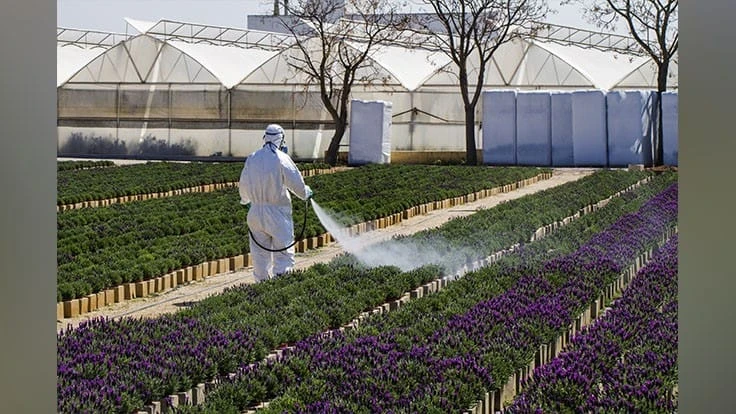
Adobe Stock
During Kurt Becker’s 26-year run at Dramm, he has seen a heap of equipment, products and techniques. But as methods advance, Becker says there are some practices that are underutilized. One is scouting.
“As we try to move away from labor-intensive practices, scouting has become a specific task rather than something you would see as part of the daily activity in the greenhouse,” he says. “Fifty years ago, it was fine. People were paying attention to the crop more because they were hand watering and more engaged with the crop on a regular basis. … Someone was actually interacting with the crop and seeing the pests.”
While scouting is not a complete preventative measure, Becker says it significantly reduces or limits pests in the greenhouse. He also says if growers scout more, they become more aware of pests and conscious of their patterns, and able to spray areas more frequently.
Calendar sprays and pesticide rotation can help as well, Becker adds. While he suggests a combination of calendar and chemical sprays, he notes that routine applications can “do a better job at catching the problem.” He also says that rotating through pesticides can “keep numbers low.”
“It’s more a matter of how far you go before things get out of control,” he says. “We do like the idea of working through a schedule and basically saying this is the way to keep that pest population down in the first place.”
Scouting isn’t the only thing that has changed over the years. Becker says chemical applications have too. Now, most applications are meant to control specific problems rather than a broad spread. But 20 years ago, pesticides “nuked” everything in the greenhouse. Those no longer exist, or if they do, they are very rare and have strict rules accompanied with them, he says.
Because of this, Becker says it is easier to target specific plants. For example, growers can spray a corner of the greenhouse, 20 plants or a row and not have to treat the entire house.
While Beker shares that machinery hasn’t shifted that much, what has improved is people’s understanding of techniques and equipment, which inherently makes for more successful facilities.
“I don’t see that technology has changed but we have seen more willingness to understanding and trying different techniques to find better ways to do the job,” Becker says. “This is good for the long run.”
Latest from Greenhouse Management
- Anthura acquires Bromelia assets from Corn. Bak in Netherlands
- Top 10 stories for National Poinsettia Day
- Langendoen Mechanical hosts open house to showcase new greenhouse build
- Conor Foy joins EHR's national sales team
- Pantone announces its 2026 Color of the Year
- Syngenta granted federal registration for Trefinti nematicide/fungicide in ornamental market
- A legacy of influence
- HILA 2025 video highlights: John Gaydos of Proven Winners





